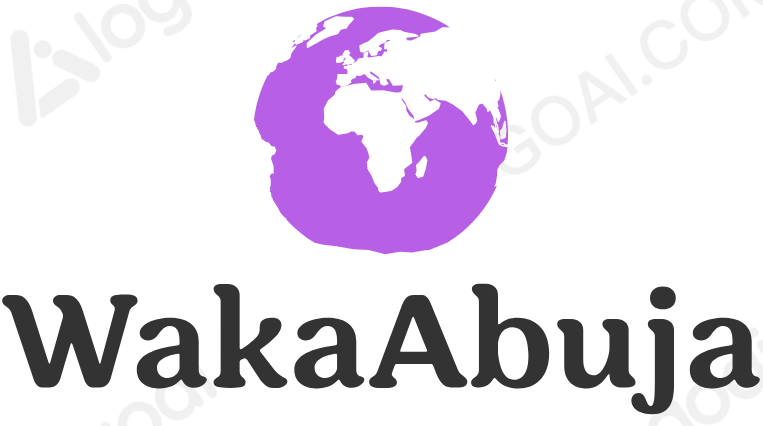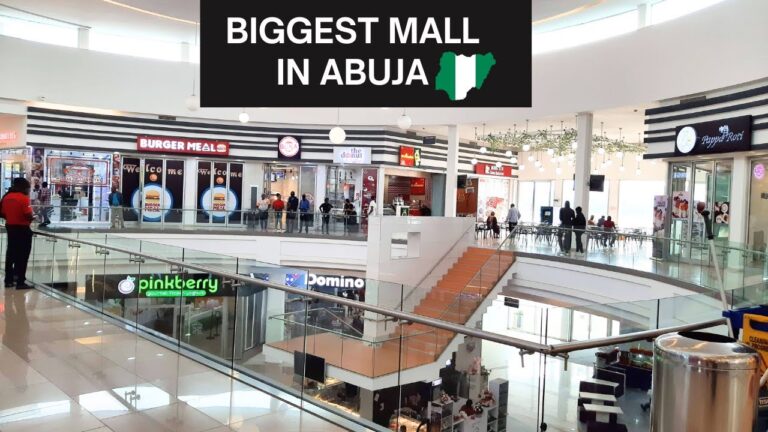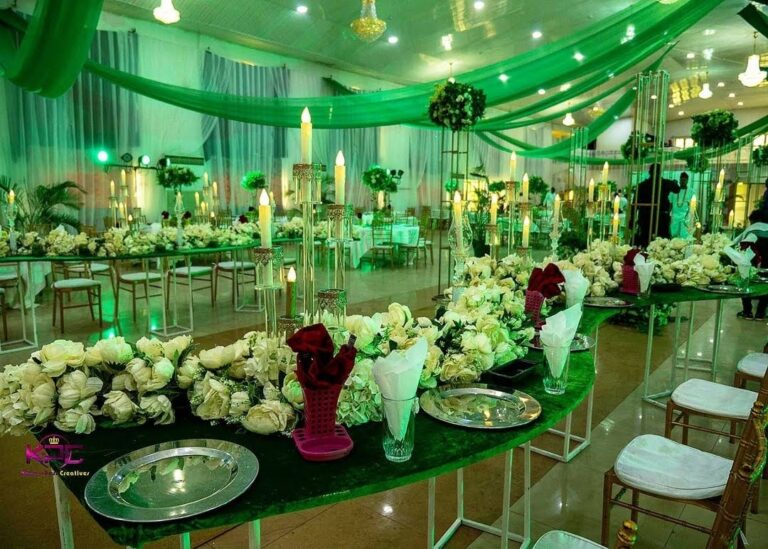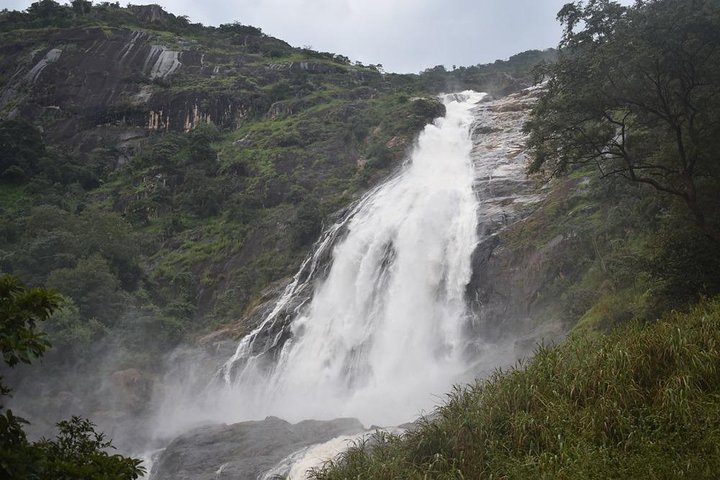The capital city of Nigeria, Abuja, is known for its stunning architecture, lush greenery, and well-planned urban design. Unlike many cities that grew organically, Abuja was meticulously planned and divided into districts, each with its own personality. Here’s everything you need to know about Abuja’s districts, whether you’re a first-time traveler, seasoned traveler, or local looking for more information.
From the Central Business District to Maitama and Garki, Abuja’s districts offer a variety of experiences.
Table of Contents
- Introduction to Abuja
- List of Abuja Districts
- Detailed Guide to Each District
- Central Business District (CBD)
- Maitama
- Garki
- Wuse
- Asokoro
- Jabi
- Gwarinpa
- Utako
- Lugbe
- Katampe
- Key Facts About Abuja Districts
- Pros and Cons of Each District
- FAQs About Abuja Districts
- Travel Tips and Recommendations
- Visual Elements and Resources
- Disclaimer
FCT Abuja
Abuja, often referred to as the “Center of Unity,” was officially declared Nigeria’s capital in 1991, replacing Lagos. The city was designed by renowned international planners and architects, making it one of the most organized cities in Africa. Its districts are strategically planned to serve different purposes, from government and business to residential and recreational activities.
“I remember my first visit to Abuja,” I shared with a friend. “The wide roads, the greenery, and the sense of order were unlike anything I’d seen in other Nigerian cities. It felt like stepping into a different world.”
List of Abuja Districts
Here’s a quick overview of Abuja’s major districts:
- Central Business District (CBD)
- Maitama
- Garki
- Wuse
- Asokoro
- Jabi
- Gwarinpa
- Utako
- Lugbe
- Katampe
Each district has its own unique charm and purpose, which we’ll explore in detail below.
Detailed Guide to Each District
1. Central Business District (CBD)
The heart of Abuja, the CBD, is where you’ll find government offices, corporate headquarters, and iconic landmarks like the Nigerian National Assembly and the Central Bank of Nigeria.
- Key Attractions:
- Eagle Square
- Nigerian National Mosque
- Nigerian National Christian Centre
- Best For: Business travelers, history buffs, and architecture enthusiasts.
- Average Cost of a Meal: ₦3,000 – ₦7,000 (7−16).
- Google Maps Link: Central Business District
“Walking through the CBD feels like being in the nerve center of Nigeria,” I noted during my last visit. “The energy is palpable, and the architecture is awe-inspiring.”
2. Maitama
Maitama is one of Abuja’s most affluent districts, known for its upscale residences, embassies, and luxury hotels.
- Key Attractions:
- Transcorp Hilton Abuja
- Sheraton Abuja Hotel
- Maitama Amusement Park
- Best For: Luxury travelers, diplomats, and expats.
- Average Cost of a Meal: ₦5,000 – ₦10,000 (12−24).
- Google Maps Link: Maitama
“Maitama is where Abuja’s elite live and play,” I observed. “It’s peaceful, well-maintained, and exudes sophistication.”
3. Garki
Garki is a bustling district that blends residential, commercial, and recreational spaces. It’s home to some of Abuja’s best markets and restaurants.
- Key Attractions:
- Garki Market
- Jabi Lake Mall
- Nicon Luxury Hotel
- Best For: Foodies, shoppers, and families.
- Average Cost of a Meal: ₦2,500 – ₦6,000 (6−14).
- Google Maps Link: Garki
“Garki Market is a sensory overload in the best way possible,” I recalled. “The colors, the smells, and the vibrant energy make it a must-visit.”
4. Wuse
Wuse is another commercial hub, known for its vibrant nightlife, shopping centers, and entertainment spots.
- Key Attractions:
- Wuse Market
- Silverbird Galleria
- Wonderland Amusement Park
- Best For: Nightlife enthusiasts, shoppers, and families.
- Average Cost of a Meal: ₦3,000 – ₦7,000 (7−16).
- Google Maps Link: Wuse
“Wuse comes alive at night,” I said. “The bars, clubs, and restaurants make it the perfect place to unwind after a long day.”
5. Asokoro
Asokoro is an exclusive district housing government officials, diplomats, and high-net-worth individuals.
- Key Attractions:
- Asokoro District Hospital
- Presidential Villa (Aso Rock)
- Diplomatic Zones
- Best For: Government officials, diplomats, and luxury travelers.
- Average Cost of a Meal: ₦4,000 – ₦8,000 (9−19).
- Google Maps Link: Asokoro
“Asokoro is where power resides,” I noted. “The security is tight, and the ambiance is serene.”
6. Jabi
Jabi is a rapidly growing district known for its lake, mall, and recreational facilities.
- Key Attractions:
- Best For: Families, couples, and outdoor enthusiasts.
- Average Cost of a Meal: ₦3,000 – ₦6,000 (7−14).
- Google Maps Link: Jab
“Jabi Lake is my go-to spot for relaxation,” I shared. “The views are breathtaking, especially at sunset.”
7. Gwarinpa
Gwarinpa is one of the largest residential districts in Africa, offering affordable housing options.
- Key Attractions:
- Gwarinpa Estate
- Usuma Dam
- Gwarinpa Mall
- Best For: Budget travelers, families, and long-term stays.
- Average Cost of a Meal: ₦2,000 – ₦5,000 (5−12).
- Google Maps Link: Gwarinpa
“Gwarinpa is a testament to Abuja’s diversity,” I said. “It’s bustling, vibrant, and full of life.”
8. Utako
Utako is a commercial and residential district known for its markets and business hubs.
- Key Attractions:
- Utako Market
- Utako Ultra-Modern Market
- Utako Park
- Best For: Business travelers, shoppers, and families.
- Average Cost of a Meal: ₦2,500 – ₦6,000 (6−14).
- Google Maps Link: Utako
“Utako Market is a hidden gem,” I remarked. “It’s less crowded than Garki Market but just as vibrant.”
9. Lugbe
Lugbe is a fast-growing residential district popular among middle-income earners.
- Key Attractions:
- Lugbe Central Market
- Lugbe Park
- Nnamdi Azikiwe International Airport (nearby)
- Best For: Budget travelers, families, and long-term stays.
- Average Cost of a Meal: ₦2,000 – ₦5,000 (5−12).
- Google Maps Link: Lugbe
“Lugbe is perfect for those who want to live close to the airport,” I noted. “It’s affordable and well-connected.”
10. Katampe
Katampe is a developing district known for its hilly terrain and panoramic views.
- Key Attractions:
- Katampe Hills
- Katampe Extension
- IBB Golf Club (nearby)
- Best For: Nature lovers, hikers, and adventure seekers.
- Average Cost of a Meal: ₦3,000 – ₦6,000 (7−14).
- Google Maps Link: Katampe
“Katampe’s hills offer some of the best views in Abuja,” I said. “It’s a great place to escape the city’s hustle and bustle.”
Key Facts About Abuja Districts
- Population: Over 3 million people.
- Area: approximately 1,769 square kilometers.
- Climate: Tropical savanna climate with distinct wet and dry seasons.
- Best Time to Visit: November to February (dry season).
Pros and Cons of Each District
| District | Pros | Cons |
|---|---|---|
| CBD | Central location, iconic landmarks | Crowded, high cost of living |
| Maitama | Upscale, peaceful, excellent amenities | Expensive, limited budget options |
| Garki | Vibrant, great for shopping and dining | Can be noisy, traffic congestion |
| Wuse | Nightlife, entertainment, shopping | Crowded, higher crime rate at night |
| Asokoro | Exclusive, serene, high security | Restricted access, expensive |
| Jabi | Scenic, family-friendly, recreational | Limited nightlife, growing traffic |
| Gwarinpa | Affordable, spacious, family-friendly | Far from city center, traffic congestion |
| Utako | Commercial hub, affordable | Crowded, limited green spaces |
| Lugbe | Affordable, close to airport | Developing infrastructure, traffic congestion |
| Katampe | Scenic views, peaceful | Limited amenities, hilly terrain |
FAQs About Abuja Districts
1. What is the most expensive district in Abuja?
Maitama and Asokoro are the most expensive districts, known for their upscale residences and diplomatic presence.
2. Which district is best for tourists?
The Central Business District (CBD) and Garki are ideal for tourists due to their proximity to major attractions and amenities.
3. Is Abuja safe for tourists?
Yes, Abuja is generally safe for tourists, but it’s advisable to avoid isolated areas at night and stay vigilant.
4. What is the best way to get around Abuja?
Taxis, ride-hailing services (like Bolt and Uber), and car rentals are the most convenient ways to get around.
5. Which district is closest to the airport?
Lugbe is the closest residential district to Nnamdi Azikiwe International Airport.
Travel Tips and Recommendations
- Currency: Nigerian Naira (₦).
- Language: English is widely spoken.
- Transportation: Use ride-hailing apps for convenience.
- Safety: Avoid displaying valuables and stay in well-lit areas at night.
Abuja’s districts offer something for everyone, from luxury seekers to budget travelers. Whether you’re exploring the city for the first time or rediscovering it, this guide will help you make the most of your experience. Happy travels!
Disclaimer
WakaAbuja has made every effort to ensure that the information in this post was correct at the time of publication. However, we do not assume any liability caused by errors, such as price, cost, time, and location.







